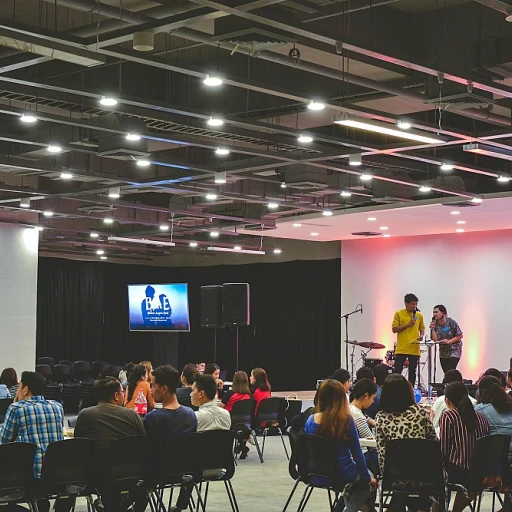
Understanding the Importance of Candidate Experience
The Significance of Elevating Candidate Experience in the Hiring Process
In today’s hyper-competitive job market, the candidate experience is crucial to a company's recruitment strategy. The concept doesn’t just encompass the interactions candidates have during the interview process, but spans the entire journey from application to feedback upon rejection or selection. This encompasses every stroke of communication that leaves a lasting impression on the potential hire. When a company prioritizes a positive candidate experience, it reflects significantly on its employer brand. It shapes the perception candidates have about the organization, and a positive experience can lead them to recommend the company to others, regardless of the job offer outcome. Surveys have shown a strong link between an enhanced candidate experience and a reduced time to fill positions, as candidates are more likely to proceed swiftly through an efficient, respectful, and clear process. Creating an experience that resonates positively involves understanding the common pain points candidates face during the application and interview processes. This knowledge can be leveraged through experience surveys, where open-ended questions allow candidates to provide detailed feedback. Understanding these nuances aids in establishing trust and portrays the hiring managers as empathetic and approachable. To gain valuable insights, companies often conduct experience surveys to identify areas of improvement in their recruitment process. By asking targeted survey questions, companies can effectively measure candidate experiences and understand what specific aspects require enhancement. For companies aiming to set themselves apart, it's essential to utilize best practices for an exceptional hiring process. This includes crafting surveys based on a standardized template that aligns with company values and goals. Ultimately, the insights derived from candidate feedback allow businesses to implement changes that lead to higher engagement, better communication, and a streamlined recruiting process. Methods for implementing these changes are explored further in the subsequent sections. A pivotal step for companies is to recognize the role of candidate experience in shaping recruitment success. For more insights on navigating today's job market, consider exploring this link to understand how partnerships, like with environmental staffing agencies, play a critical role.Designing an Effective Candidate Experience Survey
Devising a Purposeful and Impactful Survey Tool
Designing an effective candidate experience survey is a crucial step toward gaining valuable insights into your recruitment process. A well-structured survey helps gather precise feedback that identifies areas needing improvement, thus enhancing the overall candidate experience. To create a survey that truly resonates with candidates, consider these key elements:First and foremost, defining clear objectives is essential. Understand what you want to measure, whether it's the application process, interview experience, or overall satisfaction with your company as a potential employer. This helps prioritize questions and focuses the survey on elements that genuinely impact the candidate experience.
- Keep it Concise: Avoid overwhelming candidates with lengthy surveys. A more focused set of questions can result in a higher completion rate. Limit queries to the most pertinent areas such as the application process, communication during the hiring process, and the recruitment process's overall clarity.
- Utilize Various Question Types: Mix closed and open-ended questions to capture both quantitative and qualitative data. For instance, while multiple-choice questions can provide measurable insights, open-ended questions allow candidates to share more detailed feedback about specific experiences.
- Align with Company Values: Ensure questions reflect company values and culture. Measuring how well these elements are conveyed during the hiring process can be crucial for employer branding.
- Test Your Survey: Before sending it out to candidates, test the survey with a group of hiring managers or recruitment team members. Gather feedback on clarity and relevance to fine-tune the survey template.
Lastly, communication is pivotal. Clearly explain the purpose of the survey to candidates and reassure them of the anonymity and confidentiality of their responses. By doing so, you'll cultivate trust, leading to more honest and constructive feedback, ultimately paving the way to a better understanding of the candidate experience.
Sample Questions for Candidate Experience Surveys
Crafting Questions for Maximum Insight
Creating effective survey questions is an essential step in gathering meaningful candidate feedback. This task requires a careful balance between closed and open-ended questions to ensure comprehensive insights into the recruitment process.- Closed Questions: These questions are straightforward and allow candidates to select predefined answers, making it easier to quantify their responses. For instance, asking candidates to rate their interview experience on a scale from 1 to 5 can quickly highlight areas needing improvement. Closed questions are crucial for gathering consistent feedback across diverse candidate experiences.
- Open-Ended Questions: These questions provide candidates the opportunity to elaborate on their experiences in their own words. Such questions can yield rich, qualitative data that illuminates specific aspects of the hiring process, communication, or company culture. An example would be asking candidates, "What would you recommend to improve our application process?" This approach can unveil nuanced insights that might otherwise go unnoticed.
Analyzing Survey Results for Actionable Insights
Extracting Valuable Insights from Survey Data
Once you have collected responses from your candidate experience surveys, the next step is to analyze the data for actionable insights. This process is crucial for understanding how candidates perceive your recruitment process and identifying areas for improvement.
Organizing and Categorizing Feedback
Begin by organizing the survey responses. Group similar feedback together to identify common themes. This can be done by categorizing responses based on different stages of the hiring process, such as the application, interview, and communication phases. By doing so, you can pinpoint specific areas where candidates may have experienced challenges or positive interactions.
Identifying Patterns and Trends
Look for patterns and trends in the feedback. Are there recurring issues that candidates mention? For instance, if multiple candidates highlight a lack of timely communication, it may indicate a need to streamline your communication strategy. On the other hand, positive feedback about the interview process can reinforce current best practices.
Utilizing Open-Ended Responses
Open-ended questions in your survey can provide deeper insights into the candidate experience. These responses often contain rich, qualitative data that can reveal nuances not captured by closed-ended questions. Pay close attention to these comments, as they can offer unique perspectives on how to enhance the recruitment process.
Benchmarking Against Industry Standards
Compare your survey results with industry benchmarks to gauge how your candidate experience measures up. This can help you understand where your company stands in relation to competitors and identify areas for potential improvement. A positive candidate experience can significantly enhance your employer brand and increase the likelihood of candidates recommending your company to others.
Collaborating with Hiring Managers
Share the insights gained from the survey with hiring managers and other stakeholders involved in the recruitment process. Collaboration is key to implementing effective changes. By working together, you can develop strategies to address any identified issues and create a more positive candidate experience.
Analyzing survey results is not just about identifying problems; it's about leveraging feedback to make informed decisions that lead to a better hiring process. By taking the time to thoroughly analyze the data, you can ensure that your recruitment process is continuously improving, ultimately leading to a more positive experience for all candidates.
Implementing Changes Based on Survey Feedback
Embracing Feedback to Drive Change
The candidate experience is an evolving journey that hinges on the feedback you receive from experience surveys. To successfully implement changes based on candidate feedback, it's crucial to maintain a structured process that focuses on improvement and adaptability.Measuring the Impact of Improved Candidate Experience
Evaluating the Efficiency of Improvements
Measuring the impact of enhancements in the candidate experience is a crucial step in validating the success of initiatives throughout the recruitment process. By doing so, companies can ensure they are fostering a more positive experience for candidates and strategically refining their techniques. Here’s how organizations can assess the effectiveness of their changes:- Track Key Performance Indicators (KPIs): Focus on metrics that showcase improvements, such as the time-to-hire and candidate drop-off rates. A decrease in these areas can indicate a smoother application process and general satisfaction.
- Candidate Feedback Loops: Implement continuous feedback systems following the hiring process. Regularly conducting an experience survey to gather feedback from applicants who have gone through the interview process, even if they weren't selected, allows for ongoing measurement of satisfaction.
- Candidate Net Promoter Score (NPS): Determine how likely candidates are to recommend the company to other job seekers. A high NPS score suggests that candidates have had a positive experience, bolstering the company’s employer brand.
- Analyze Hiring Manager Feedback: Engage hiring managers in feedback sessions to obtain firsthand insights on process efficiencies and candidate reactions. Gathering information from those involved in the recruitment process provides a clear picture of what changes have made a tangible impact.
- Open-Ended Question Outcomes: Pay attention to the responses from open-ended questions in the surveys. While they may require more effort to analyze, these responses can yield valuable insights about specific areas of improvement that might not be captured in multiple-choice questions.












